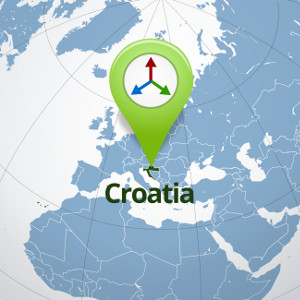WAMSTER in Split, Croatia
An instance of WAMSTER monitoring system was deployed onboard of a cruiser newbuilding. The system deployed onboard was composed of:
- WAMSTER PDC server
- Three portable STERPMU
- Ethernet switch and Ethernet cabling between PMUs and PDC server
- GNSS antennas and antenna extension cables
- Auxiliary workstation for monitoring and reporting
Three portable STERPMU devices were installed on the selected feeders in 690 V system for monitoring of two out of four generators and one of two main propulsion active front ends (AFD). Voltage terminals of STERPMU devices were connected directly to 690 V supplying the equipment. Precise 5A current clamps were clamped on CT secondary loops and Rogowski coils were mounted on cable groups supplying AFD.
WAMSTER onboard the vessel
A laptop with WAMSTER software and Ethernet switch were positioned at MSB1 room. Auxiliary Ethernet cabling was routed between switch and PMUs in MSB1 and MSB2 rooms. One Ethernet cable was routed to workshop room where additional working station was organized close to control room. GPS antennas were temporary mounted to Deck 5. Approx. 50 m of antenna cabling was routed to MSB1 & MSB2 rooms.
Deployed measurement system was used for real-time monitoring, recording and visualisation of voltage and current values of:
- Synchrophasors and derived quantities reported at synchronous rate of 60 estimations per second
- THD and harmonics aggregated on 1 min intervals
- Waveforms captured and continuously stored in STERPMU
A PMU based measurement campaign conducted during three-days sea trial provided an invaluable insight into the dynamics of the ship’s electrical system. In conditions of high harmonic pollution, ROCOF reaching up to 15 Hz/s and frequent scheduled and unscheduled blackouts the recordings collected by WAMSTER were crucial for accurate detection of flaws in PMS (Power Management System) onboard that could jeopardize ships manoeuvrability in life-threatening situations.
There is no Internet connectivity in in the ship's engine rooms, especially during the construction phase. Therefore, the local instance WAMSTER PDC server had to be deployed. Connection between all elements was established through a local Ethernet and not as usual via mobile Internet.
The campaign confirmed that portable WAMSTER can operate in the most challenging environments such as underground hydropower plants or other facilities.




